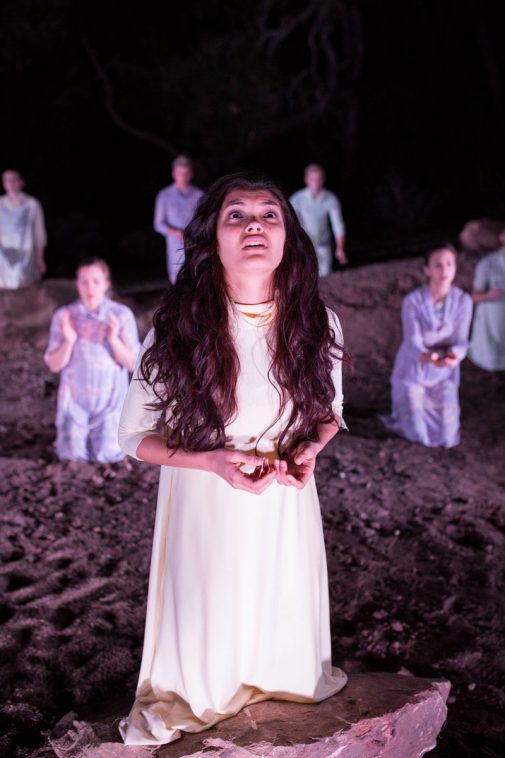Audiences Get ‘Tar and Feather’ Treatment
By
Westmont
 Senior Christine Nathanson, star of Westmont’s production of “Euripides’ Electra” in 2014, directs “Tar and Feather” in Porter Theatre on March 4 at 8 p.m. and March 5 at 2 p.m. and 8 p.m. The performances, which are free and open to the public, contain mature content.
Senior Christine Nathanson, star of Westmont’s production of “Euripides’ Electra” in 2014, directs “Tar and Feather” in Porter Theatre on March 4 at 8 p.m. and March 5 at 2 p.m. and 8 p.m. The performances, which are free and open to the public, contain mature content.
“’Tar and Feather’ asks why individually good and intellectual people turn into online trolls when stumbling upon politically insensitive content,” Nathanson says. “It asks why we allow their hyperbolic and insincere blurbs to tangibly and permanently ruin individual lives.”
The cast and crew is made up with about 20 students from different disciplines, including senior Brent Starrh, who is lighting designer. Kristin Idaszak, who earned a Master of Fine Art at UC San Diego and is a Playwrights’ Center Jerome Fellow in Minnesota, is the playwright.

“I chose to collaborate with Kristin Idaszak, a nationally recognized playwright, to produce a new script, one that would incorporate everything that makes Greek theater so compelling — emotional catharsis, a powerful chorus, a tragic structure — as well as a modern social issue. What better than the topic of public shaming, an ancient practice that continues online today just as violently as it did a thousand years ago?” says Nathanson.
When Erin takes a #gaschamberselfie, it goes viral, and so does she. Her job offer gets rescinded, she’s not allowed to go to class, and her family and friends abandon her. Everyone that is, except for Claudia, her best friend, who hatches a plan to confront Erin’s anonymous online trolls. “Tar and Feather” examines public shaming in the digital age. How close are any of us to a fall from grace? And how does a well-intended person transform into a troll?
“The purpose of this play is to create broad awareness about this issue by displaying the destructive nature of online public shaming,” says Nathanson. “By shrinking the playing space and placing the audience on stage with the actors, the play takes on an intimate quality that directly implicates the audience in the events that happen in front of them. My hope is that observers become participants in the action of the show and leave the performance changed by the encounter.”
Filed under
Academics, Arts at Westmont, Campus Events, Press Releases, Student Stars